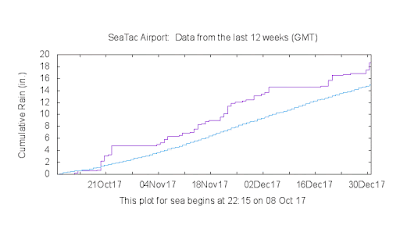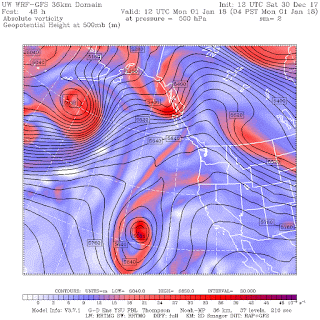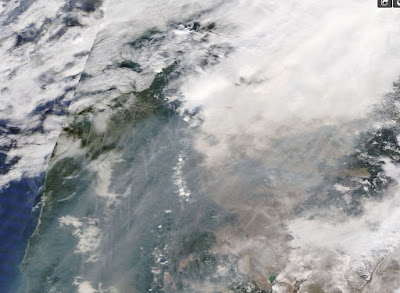During the past few weeks, we have had several periods of strong temperature inversions over the lower atmosphere of our region.
Were they unusual or record breaking?
This blog will take on this important question!
A
temperature inversion occurs when temperature increases with height, which is the opposite of the normal situation in which temperature declines with height in the lower layers of the atmosphere.
Here is a of temperature and humidity with height at Quillayute, on the WA central cost for 4 AM on Dec. 11. The right line is temperature and the left is dew point. The y axis is height in pressure (700 is about 10,000 ft, 850 about 5000 ft)
There is one strong inversion at this time, with temperature going from -3C at the surface to 17C a few thousand feet up:
a 20C or a 36F increase in temperature.
Imagine what it was like climbing a modest peak that day? Below freezing at the surface and around 60F when you got to the top?
But is this the record inversion ever observed here? Let find out using Quillayute data for the evaluation. This location is the closest vertical sounding location to most of the Puget Sound region and provides insights into the air moving in off the Pacific.
UW Atmospheric Sciences graduate student Joe Zagrodnik ran the numbers and let me show you what he found. He looked at 13,949 12Z Quillayute soundings from 1979-present.
First, here are the TOP FIVE inversions at the coast
1. December 25, 1985, 23.3 C
2. January 17, 2009, 22.7 C
3. December 26, 1999, 19.9 C
4. December 24, 1985, 19.1 C
5. January 15, 2009, 19.1 C
Our super-inversion last week is not even on the list, with the big winter being December 25, 1985. Note that the big inversions like the mid-winter period: December and January.
But Joe did not stop there. Here is the frequency of inversions of varying intensity (10C or more rise in the lower few thousand feet). There are lot more moderate inversions than strong one, with a sharp drop off in frequency for the more extreme events.
Now take a look at the frequency of strong inversions (great than 15C increase with height in the lower few thousand feet) by month. December, January and October lead the pack, but there are some even in the summer. March and April had none!
Looking at more moderate inversions (stronger than 10C), late summer and early fall are the top months)
So how do we explain all this?
During the summer and fall, we can get a decent inversion when cool marine air from off the Pacific ocean undercuts warmer air above. And the air above is still quite warm well into the fall.
But to get the super-inversion, we need something that warm the atmosphere aloft and greatly cool the surface air layer.
You can do this with a strong ridge of high pressure overhead.
There is sinking air in highs, with the sinking producing warming by compression (air goes from low to high pressure). Think of your bicycle pump. And warm air moves in from the south on the western side of highs.
The sinking aloft kills clouds, which allows the surface to radiate heat into space through infrared radiation emission. And highs have relatively weak winds, so there is not a lot of mixing of warm air down to the surface. So high pressure areas are inversion machines!
And there is something else. Snow. The strongest inversions often occur during periods with snow on the ground, since snow reflects solar heating but emits like mad in the infrared.
Finally, why do we care about inversions?
Because they are associated with great vertical stability in the atmosphere, greatly weakening vertical mixing. As a result, air quality declines with inversions, cold air stays entrenched near the surface, and fog often develops (which is bad for aviation and road travel).






















































